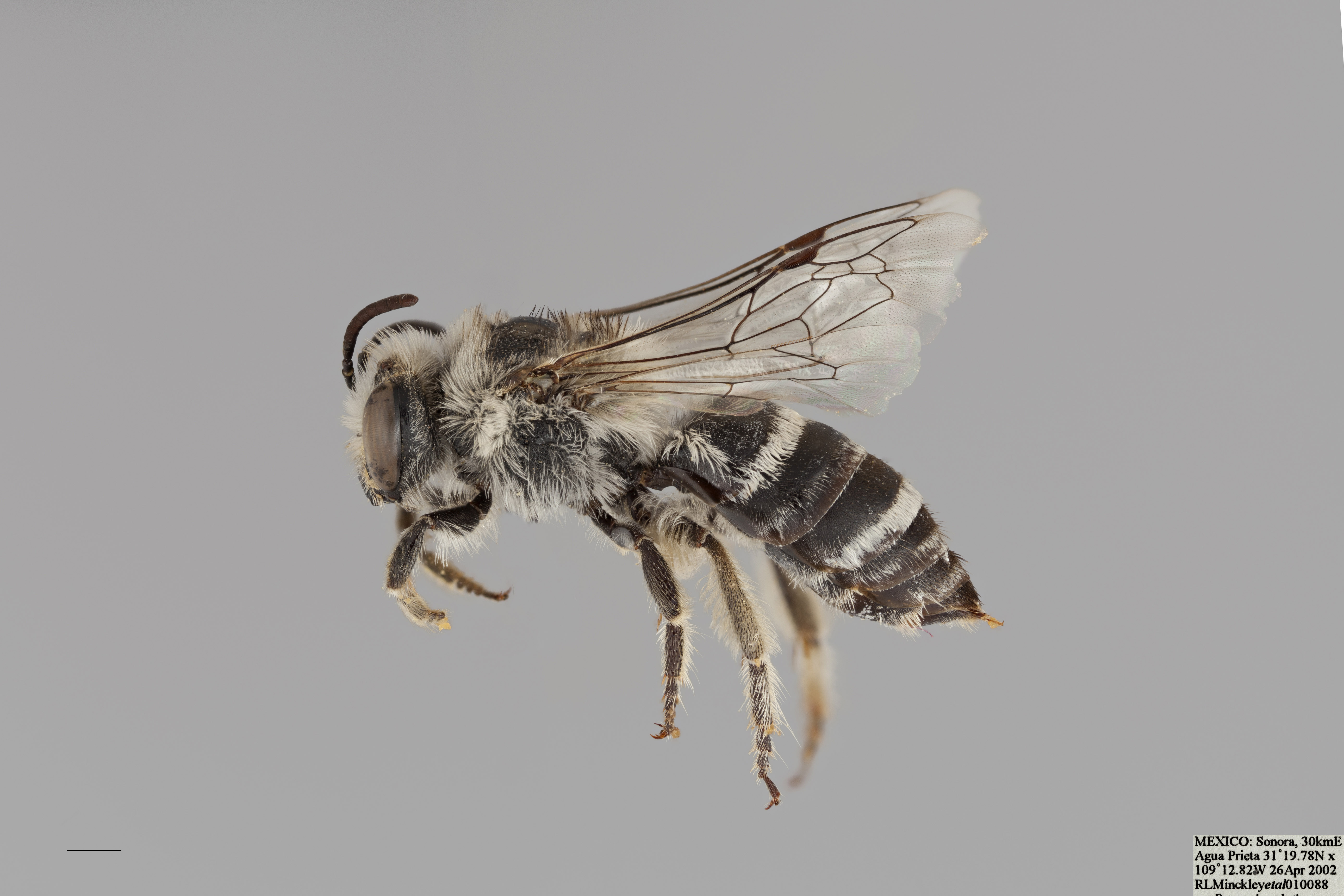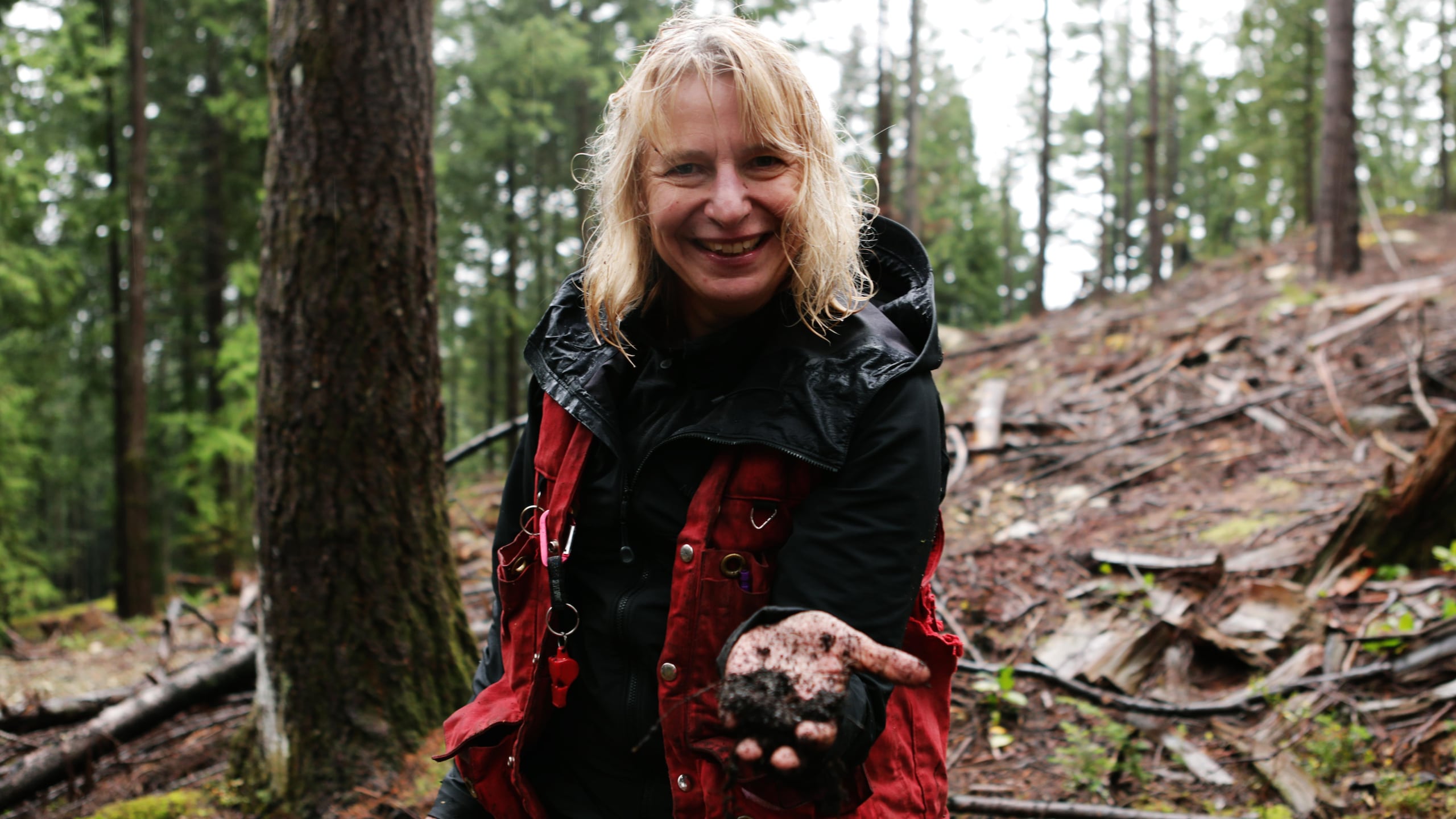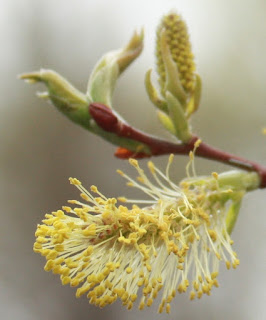Many of us live in apartments, without a plot of earth for a garden. If you want to treat yourself and pollinators well, what should you grow in pots or planters?
My answer is
Herbs. They'll be great for you in the pot, pan, or salad, and if you manage them right, full of flowers for pollinators. Further, many herbs are very tolerant of the wind and drying conditions of an upper-floor balcony, so they'll be easier for you to grow than other flowering plants.
 |
| Basil flowers - by Natalie Ward |
Basil is one of my favorites. Even though I have a back yard, it's too shady these days for basil to get the full heat and sun it needs. So, I grow it in pots on the deck.
 |
Carpenter Bee on Basil - Gideon Pisanty,
CC by SA 3.0 |
Many people trim off the basil flower spikes, because it prolongs the growth of the leaves. But the flowers are excellent in salad, and very
attractive to pollinators.
If you have a big pot, I'd recommend a mix of sweet basil, lemon basil, Thai basil, and holy basil. Put it next to your patio tomatoes to remind you to use the leaves with tomato dishes!
 |
| Thyme in a pot - Greenmars, CCbySA 3.0 |
I never have enough
Thyme! It's highly tolerant of drying and heat. Many varieties are winter hardy. You can find half a dozen different flavors and forms, with flowers ranging from pink to pale purple to white. As with basil, if you have a long window box, try mixing several varieties together. The flowers are edible but strong tasting, so best in soups and stews.
I hope I don't need to remind you not to use pesticides on your herbs???
 |
| Coriander/Cilantro - H. Zell, CC by SA 3.0 |
A fantastic group of herbs to grow from seed in pots are the carrot family herbs dill, fennel, and coriander (
Coriandrum sativum). They grow easily from early spring sown seed, but they need a but more watering than thyme does. Flowers, of course, are their way of making the yummy seeds, so do double duty on your balcony. However, these annual plants die back after the seeds ripen, so plant several waves of them spaced about two weeks apart for whole season enjoyment.
 |
| Dill in full bloom - Clement Kent, CC by SA 3.0 |
If you use the leaves (coriander leaves = cilantro), you can pinch one of these plants several times to get it to grow more bushy. Then when you stop pinching, you'll get an explosion of flowers.
In summer heat, the leaves can be all too fleeting. Of course, you can dry them, but my in-laws used to freeze dill (
Anethum graveolens) just after picking, to have fresh green sprigs on potatoes or fish - an Estonian favorite!
 |
| Fennel - Köhler's Medicinal Plants (1887) |
"Above the lower plants it towers,
The Fennel with its yellow flowers;
And in an earlier age than ours
Was gifted with the wondrous powers
Lost vision to restore." - Longfellow, The Goblet of Life, 1842
Fennel (
Foeniculum vulgare) is biennial, so it doesn't bloom until the second year. In the ground it is quite hardy but in you may need to wrap the pots to bring it through our winters. Remember, Longfellow warned you it will grow tall! Bronze Fennel is an attractive variety.
 |
| A bed of Chives in June - Clement Kent, CC by SA 3.0 |
 |
| Bumblebees like Chives |
 |
| Garlic Chives - Clement Kent, CC by SA 3.0 |
Chives (
Allium schoenoprasum) make a good pot plant, although I find if not watered enough they get rather bitter. For the purple species, blooming is in early summer. Remove the flowers when they fade for a smaller bloom later in the summer.
Chive flowers are longish, favoring bumblebees.
At my friend Jon's cabin near northern Georgian Bay, chives have naturalized on the granite rocks where they grow in a very, very thin layer of gravel. They also grew on nearly bare granite at my parents' cabin near Thunder Bay. So I can say with complete confidence that they will be hardy in your pot on the balcony.
"He who bears chives on his breathe,
Is safe from being kissed to death."
-
Marcus Valerius Martialis, 80 A.D.
Martial's epigram is even more true for Garlic Chives (
Allium tuberosum), whose leaves have the added flavor and scent of garlic. I used to grow these under the kitchen window for a milder addition to salads than a crushed garlic cloves, but they seeded so abundantly I had to exile them to the back of the yard. Flowers arrive in late summer, and are attractive to pollinators, but too strong-tasting to me to use in the kitchen.
 |
| Spanish Tarragon - George Hull, CC by SA 2.5 |
Did you know that there are many species of marigolds in Mexico?
Tagetes lucida is also known as
Spanish Tarragon. It's completely unrelated to French Tarragon, which tends not to thrive on balconies. But the Spanish Tarragon marigold is happy in sun and baking heat. The leaves are good in many of the same recipes where you'd use a regular tarragon. And, in late summer/early fall, you get many small yellow flowers for the bees.
Wow - so many more herbs to go! For sunny planters I'd also recommend marjoram and oregano, both great bloomers and worthy in the pot or on the pizza. But let's turn to those of us whose site faces north, or an adjoining building.
Make mine
Mint! There are many species of mint (
Mentha) and most of them will tolerate some shade. They are better in pots than in the soil, because they tend to runner about and take over the garden if you let them. They are of course an essential of herbal and Mediterranean teas, and of many kinds of cooking recipes. There is spearmint, peppermint, lemon mint, chocolate mint...the list goes on.
I've put multiple mints in one pot, and this works fine for the first year. But by the second and later years one has driven the others extinct.
Flowering happens frequently, and I like to add the flower spikes to fresh mint-water for summer hot days. But, please pick them off when they are done, or your plants will tend to get woody and leggy.
There are many other herbs, of course - every culture around the world has its favorites. Try some that bloom well on your balcony, and share your herbs with the pollinators!





.jpg)






































